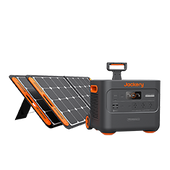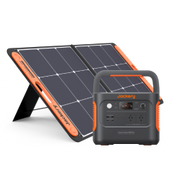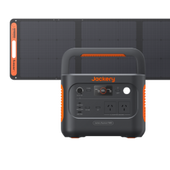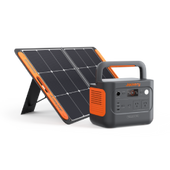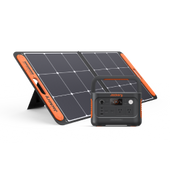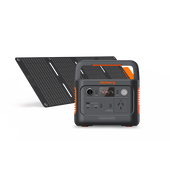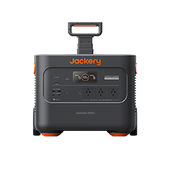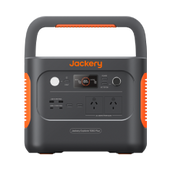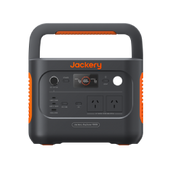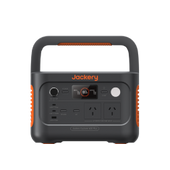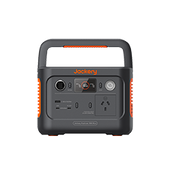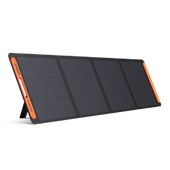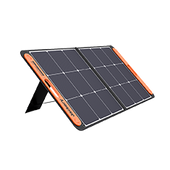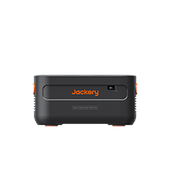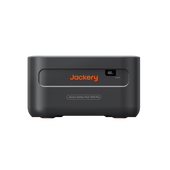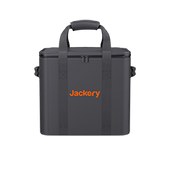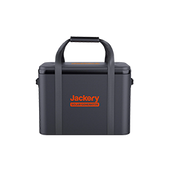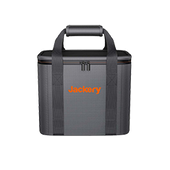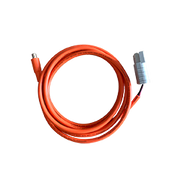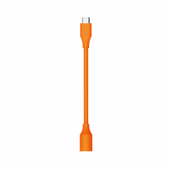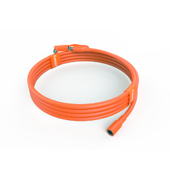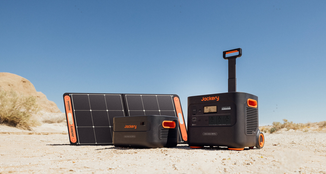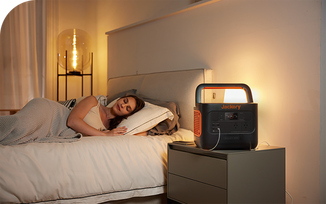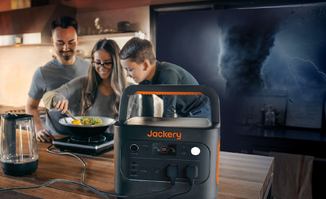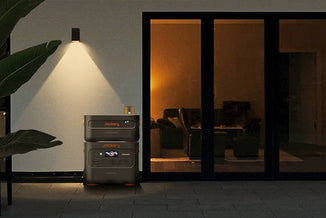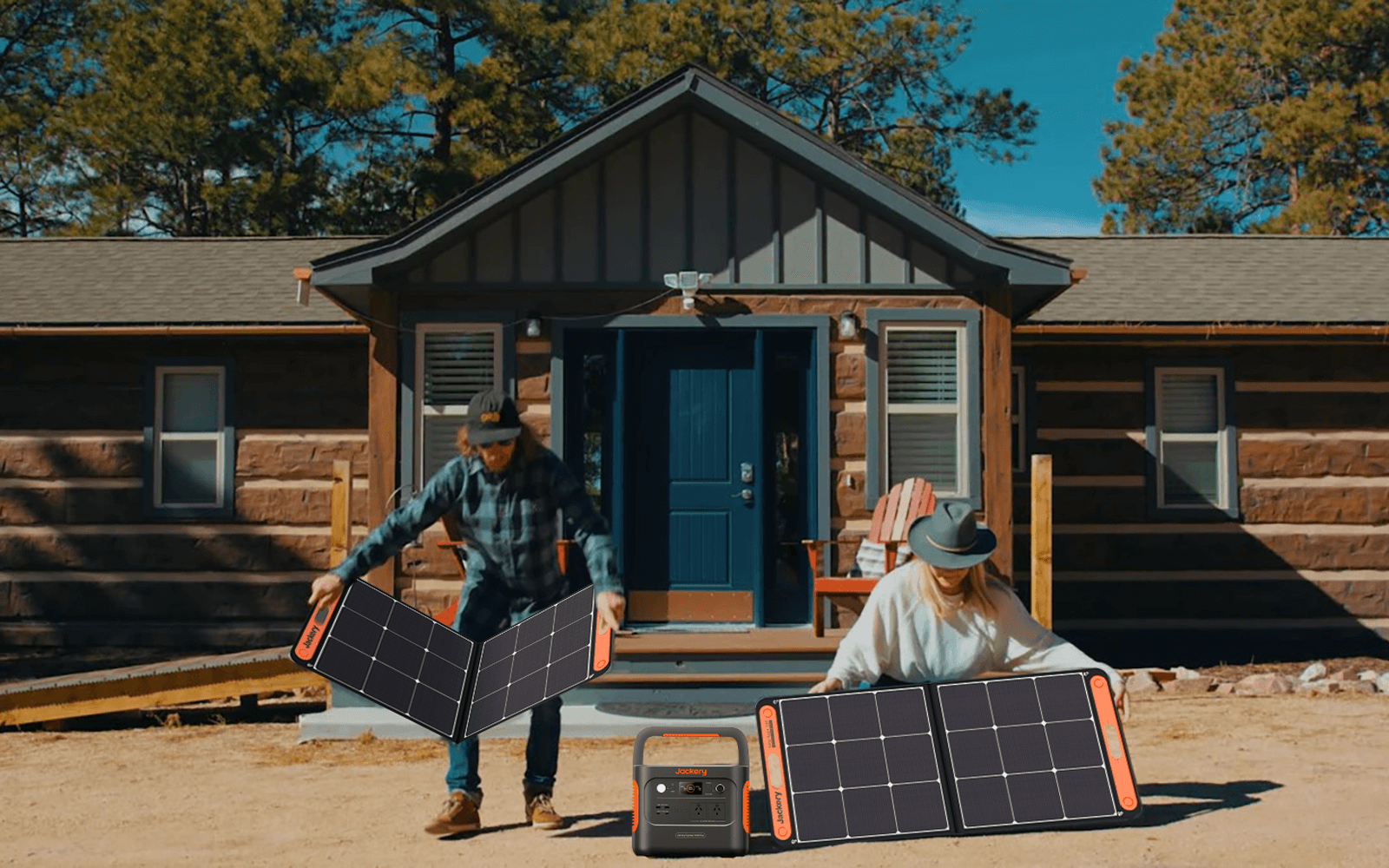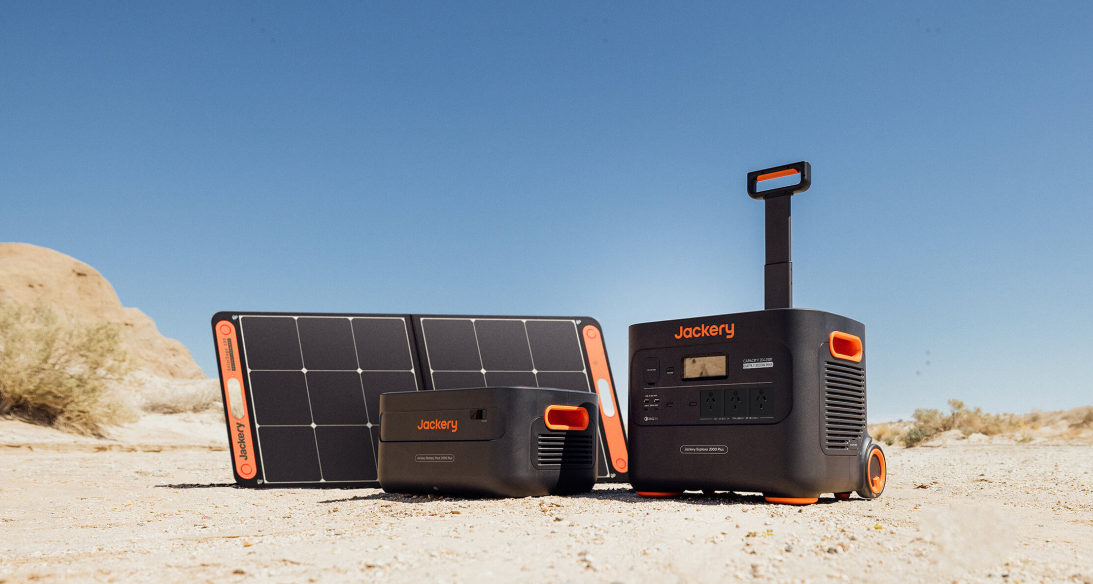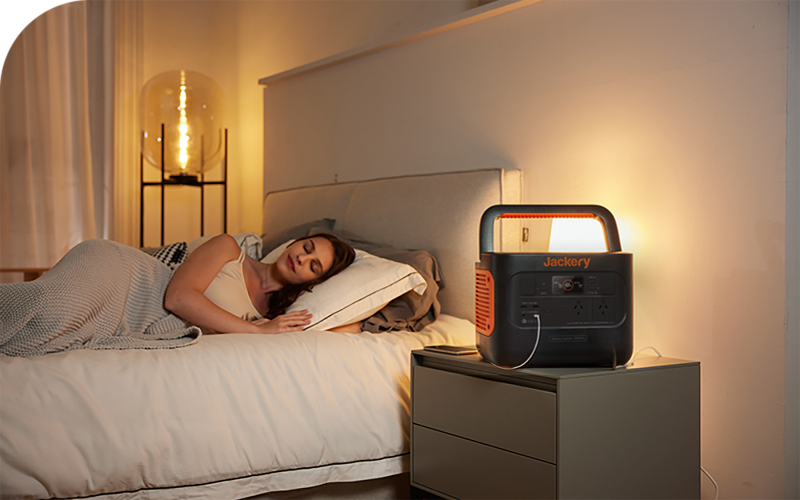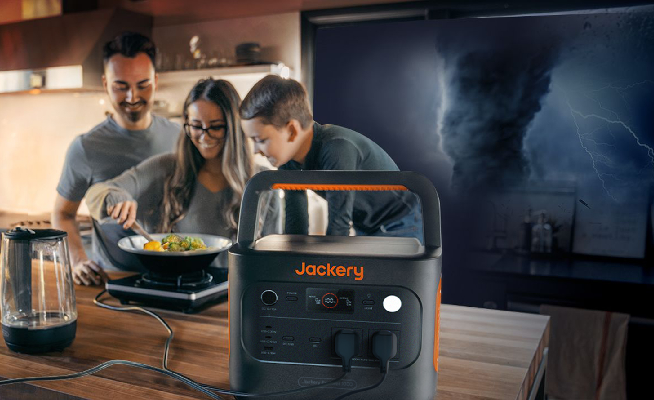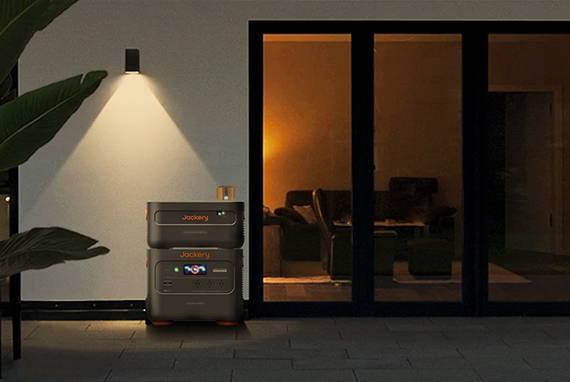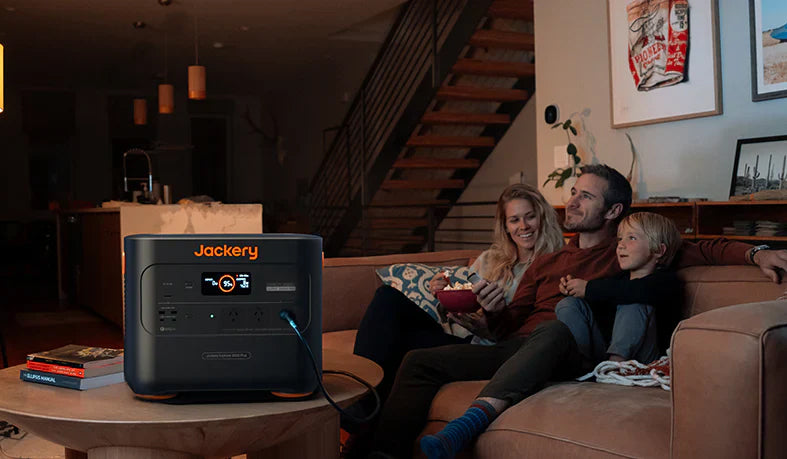Key Takeaways
· Average Usage: Most refrigerators use 3-6 amps, depending on their size.
· Compact Models: Mini fridges typically draw 1-2 amps.
· Daily Cost: Running a fridge costs less than $1 in most areas.
· Impact of Climate: In hot regions like Australia, fridges work harder due to frequent use.
· Portable Power Solutions: Jackery Solar Generators can run fridges efficiently, even during outages.
· Energy Efficiency: Modern fridges consume less power compared to older models.
How Many Amps Does A Fridge Draw?
After understanding what an amp is, let's explore how much electricity refrigerators use. Fridges are essential appliances, and their power needs vary depending on size, design, and environmental factors. Energy consumption can change based on daily habits and local climates, such as in Australia, where high temperatures influence how fridges are used.
Impact of Daily Habits and Climate
In warm countries like Australia, fridges often work harder. People store drinks and perishable foods to keep them fresh in the heat. Frequent opening of fridge doors allows cool air to escape, making the compressor run longer. This leads to higher power consumption. For example, accessing chilled beverages multiple times on hot days can significantly increase energy usage.
Average Amps Usage by Fridge Type
Fridges consume electricity continuously, but the amount differs between small and large units:
· Mini Refrigerators: Compact models, like those in offices or hotels, use 1-2 amps. Their energy needs are lower because of smaller cooling spaces.
· Top-Freezer Refrigerators: These medium-sized fridges, common in family homes, draw 3-4 amps. They balance energy efficiency with ample storage.
· French Door Refrigerators: Stylish and spacious, typically consuming 4-6 amps.
· Side-by-Side Refrigerators: Larger and designed for modern families, these models use 7-8 amps.
· Commercial Refrigerators: With energy needs of 10-20 amps or more, these are for large-scale storage in restaurants or stores.
|
Fridge Type |
Amps (Range) |
Door Type |
Size (Typical) |
|
Mini Refrigerator |
1-2 amps |
Single door |
Compact (hotel/office) |
|
Top-Freezer Refrigerator |
3-4 amps |
Freezer on top |
Medium (family size) |
|
Side-by-Side Refrigerator |
7-8 amps |
Vertical split doors |
Large (modern family) |
|
French Door Refrigerator |
4-6 amps |
Two doors on top, freezer drawer at bottom |
Large (stylish and functional) |
|
Commercial Refrigerator |
10-20 amps or more |
Various designs for large-scale use |
Extra large (commercial use) |
Do Fridges Use A Lot of Electricity?
Refrigerators are essential appliances, operating continuously to keep food fresh. Their energy consumption varies based on size, usage habits, and climate. According to the International Energy Agency (IEA), long-running appliance efficiency policies have helped halve the average energy consumption of many common appliances, including refrigerators.
Geographical and Cultural Influences
In warmer climates like Australia, refrigerators often work harder due to higher ambient temperatures. Frequent opening of fridge doors allows cool air to escape, prompting the appliance to consume more energy to maintain optimal temperatures. Conversely, cultural habits also play a role. For instance, Australians may dine out more frequently than individuals in countries like India or Japan, potentially leading to less frequent home refrigerator use. These lifestyle differences can offset the increased energy demands caused by climate, resulting in comparable overall usage.
Understanding Watts, Volts, and Amps
In order to determine the electricity consumption values of refrigerators, we need to know what watts, volts, and amps are and what their relationship is.
· Watts (W): Measure of total power consumption.
· Volts (V): Measure of electrical potential.
· Amps (A): Measure of electrical current.
The relationship is defined by the formula:
Watts = Volts × Amps
For example, if a refrigerator operates at 240 volts and draws 2.75 amps, it consumes:
240 V × 2.75 A = 660 W
This means the fridge uses 660 watts of power when running. Over time, this consumption contributes to the household's energy usage.
Cost of Running a Refrigerator in Australia
The annual cost of operating a refrigerator in Australia varies based on size and location. Below is a table outlining the estimated yearly expenses:
These figures illustrate that larger refrigerators and warmer climates incur higher operating costs. However, individual usage patterns and energy tariffs significantly influence the total expense.
How Much Does It Cost to Run a Fridge At Australia?
|
City |
300–400L |
400–500L |
500–600L |
600–700L |
|
Canberra |
$86 |
$98 |
$116 |
$134 |
|
Melbourne |
$88 |
$100 |
$118 |
$136 |
|
Darwin |
$92 |
$105 |
$124 |
$143 |
|
Hobart |
$97 |
$110 |
$130 |
$150 |
|
Perth |
$101 |
$115 |
$136 |
$157 |
|
Brisbane |
$102 |
$116 |
$137 |
$158 |
|
Sydney |
$117 |
$132 |
$157 |
$181 |
|
Adelaide |
$149 |
$169 |
$199 |
$231 |
What Factors Affect The Fridge Amps Usage?
A refrigerator's amp consumption depends on various factors, from let 'size to how it's used. Let's examine some key influences backed by examples and practical insights.
1. Fridge Size and Type
Larger refrigerators consume more amps than smaller ones. For instance:
· A mini fridge uses around 1-2 amps.
· French door models typically consume 4-6 amps.
· Commercial fridges, designed for heavy-duty use, can draw 10-20 amps or more.
Smaller fridges are ideal for compact spaces, while bigger models suit larger households.
2. Insulation Quality
Fridges with poor insulation lose cool air faster, making compressors work harder. This increases energy consumption. Newer models often feature advanced insulation, reducing amp usage.
3. Ambient Temperature
Warm climates, such as in Australia, significantly affect amp consumption. In higher temperatures, refrigerators must counteract external heat to maintain cooling. For instance, opening the fridge door frequently on a hot day leads to more energy usage. Studies suggest up to 10% more energy consumption in warmer environments compared to cooler regions.
4. Usage Habits
Cultural habits also play a role in fridge energy consumption. Australians, for example, often store drinks and snacks in their fridges, accessing them multiple times daily, especially in summer. But in Australia, especially the younger generation, they rarely eat at home. Going out for dinner is a routine, so Australians do not use the fridge for food items very often.
5. Age and Maintenance
Older refrigerators generally consume more energy. Has your old refrigerator still got air leaks? Clean those coils and replace that worn plastic around the door. Energy-efficient appliances can replace aging units with efficiency and result in savings of as much as 20% on electricity bills. Knowing these aspects will help the deciders choose efficient uses when it comes to the use of the fridge, letting them save up on energy bills and money.

Jackery Portable Power Stations for Fridges
Jackery Portable Power Stations for Refrigerators
Jackery designs and manufactures portable solar devices to cater to people's energy requirements whilst they are mobile. These devices are environmentally friendly and quick to set up. The devices are ideal for refrigerators in case of a power outage or refrigerators in the course of an outdoor activity. For concerns related to how many amps a fridge draws, there are Jackery products Jackery's for the purpose.
Jackery Solar Generator 2000 Plus
The Jackery solar generator 2000 Plus has a rated capacity of 2,042Wh; however, it can be extended to hold up to 12,000 kWh. This product has a total power output of 3000W, which suffices for high-load devices such as refrigerators. Anyone with a 12V fridge wondering how many amps a 12V fridge draws can, therefore, purchase this device.

It can be charged fully in 6 hours using the appropriate solar panels. The LiFePO4 batteries have a lifespan of 10 years, which makes them very durable. It is light and can be carried around, thus making it suitable for home or outdoor use. Users appreciate it for its reliable performance and ease of" deployment.
User Review:
"I even used it when we went camping, and it supp "rated my all-day 12V Fridge!"
Jackery Solar Generator 1000 Plus
The Jackery solar generator 1000 Plus model has a storage capacity of 1,264 watthours that can be increased to 5,000 watthours. It can output up to 2,000 watts without any problem, making it ideal even with mini-fridges and other household items. The generator is very effective in storing energy from the sun since it will be full after 4.5 hours when using 4 panels 100W each.
It is a lightweight piece of equipment that can be easily carried to locations by those looking for how many amps a fridge draws Australia-friendly devices. Its small size has proven to be effective for various purposes ranging from travelling to having "un outdoors.

User Review:
"Compact, high capacity and reliable. I ran my fridge with it the entire road trip we did, and" it worked absolutely fine."
|
Feature |
2000 Plus |
1000 Plus |
|
Capacity |
2,042Wh (expandable to 12kWh) |
1,264Wh (expandable to 5kWh) |
|
Output Power |
3,000W |
2,000W |
|
Solar Charging Time |
~6 hours |
~4.5 hours |
|
Battery Type |
LiFePO4, 10-year lifespan |
LiFePO4, 10-year lifespan |
|
Portability |
Lightweight |
Very lightweight |
Fridge Amps FAQs
1) How many amps does a 240v fridge use?
A 240V fridge typically uses 3-6 amps. The exact number depends on size and type. For example, small fridges draw closer to 3 amps, while larger ones may reach 6 amps.
2) Can I run a refrigerator on a 15-amp circuit?
Yes, most refrigerators run on a 15-amp circuit without issues. However, avoid plugging in multiple high-power devices on the same circuit. This can prevent overloading and ensure safe operation.
3) What size of generator do I need to run a fridge?
To calculate, multiply the fridge's wattage by runtime hours, then divide by the generator's capacity. For example, Jackery Solar Generator 2000 Plus can power a fridge for 8-12 hours, depending on size.
4) How many amps does it take for a refrigerator?
A standard household refrigerator uses 3-6 amps on average. Mini fridges use less, around 1-2 amps, while commercial models may exceed 10 amps.
5) Is a fridge 5 amp or 15 amp?
Most fridges fall closer to the 5 amp range during regular operation. Some larger or commercial fridges might exceed this and require more power, depending on their design.
Final Thoughts
Understanding how many amps a fridge draws helps manage energy use better. If buying a new fridge, always check its amp rating. Energy-efficient models reduce electricity bills and help the environment. Jackery portable power stations are perfect for cutting costs and supporting a sustainable future.
Their durability and portability let you power fridges during outages or off-grid trips. With Jackery Solar Generators, you can run your fridge for specific hours, saving money and energy. Solar-powered solutions not only save money but also promote eco-friendly living. Start saving and supporting a greener planet today!

